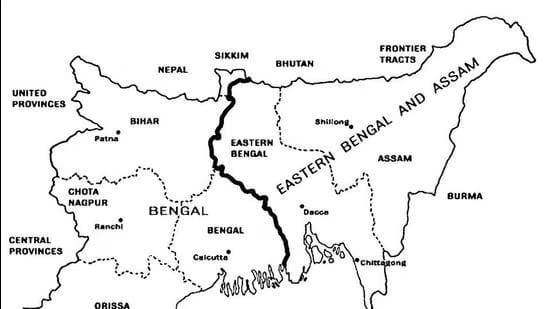What Was the Swadeshi Movement? and Its History
Read this blog very carefully because it is a very important topic if you are Preparing for IAS/UPSC. The Swadeshi movement happened when the British government wanted to partition Bengal, but the people of India were against the idea of partition, so they started the Swadeshi movement and tried to boycott foreign goods. Before you want details about the Swadeshi movement, you have to know about the Bengal partition. Lord Curzon, the Viceroy of India from 1899 to 1905.
During this period, he applied a divide-and-rule policy in Bengal. He said that the population of Bengal is huge, so it is very hard to control by the British government. So they proposed the idea to divide Bengal into two parts: East Bengal and Assam (predominantly Muslim) and West Bengal (predominantly Hindu). When the people knew about this, they started the Swadeshi movement. The main leaders of this movement are Bal Gangadhar Tilak, Bipin Chandra Pal, and Lala Lajpat Rai, also known as Lal-Bal-Pal. They tried different methods to stop the partition. But Lord Curzon announced partition on July 20, 1905, and it officially took effect on October 16, 1905.

Hindustan Times
Reason Why Lord Curzon Wants Partition of Bengal
- Bengal is becoming the epicenter of nationalism.
- Want to build loyalty among Muslims through (East Bengal)
- Educated middle-class Hindus participating in anti-British movements
- Administrative Efficiency (Official Reason) The population of Bengal during the partition was around 70-80 million and was too large to govern effectively.
- What to reduce the strength of the Indian National Congress by dividing the Hindus and Muslims. (political reason)
Leaders in the Swadeshi Movement and their contribution
- Krishna Kumar Mitra
- Surendranath Banerjee
Role: Both are very powerful leaders in Bengal and play a major role in the Swadeshi movement.
Work: They start to spread awareness about the partition by writing articles in newspapers like The Bengalee and Hitabadi. Start of the public gatherings and boycotts of British goods.
- Bal Gangadhar Tilak (Bombay and Pune)
- Bipin Chandra Pal (Punjab and other northern areas)
- Lala Lajpat Rai
Role: Assertive nationalists, part of the Lal-Bal-Pal trio.
Work: Bal Gangadhar Tilak started using festivals like Ganesh Utsav to promote the Swadeshi movement and boycott British goods.
Bipin Chandra Pal started national education by spreading national thought in the newspaper “New INDIA.” Lala Lajpat Rai, a strong leader of the Swadeshi movement, started uniting the people across areas for the national cause.
- Rabindranath Tagore
Role: Poet and culture leader
Work: Led Raksha Bandhan ceremonies where Hindus and Muslims tied rakhis to show unity. Also, he composed the song “Amar Sonar Bangla” to encourage the youth (it later became the national anthem of Bangladesh).
- Aurobindo Ghosh
Role: Revolutionary and spiritual thinker.
Work: Starting the “Bande Mataram” newspaper to spread nationalism and encourage youth.
Impact of the Swadeshi Movement
- Boycott British goods.
- Revive domestic production
- Support Indian-made products and businesses.
Why the Swadeshi Movement failed UPSC
The movement from 1905 to 1911 was an important step in the Indian freedom struggle, particularly after the partition of Bengal. Important note on “Why the Swadeshi Movement Failed” for UPSC aspirants.
- British government’s brutal methods: Lord Curzon used very brutal methods to suppress the Swadeshi Movement. The government pushed leaders like Bal Gangadhar Tilak, Aurobindo Ghosh, and Bipin Chandra Pal. Other brutal methods included lathi charges, arrests, press censorship, and the banning of public meetings.
- Lack of support from other parts of India: This movement gets limited support from other parts of India because the movement is mainly confined to Bengal, and parts of India have less emotional connection with Bengal.
- Congress Internal Divisions: In the Indian National Congress, ideology was developed and divided between moderates and extremists in the Surat session. This is also a big reason the Swadeshi Movement failed.
- Lack of Coordinated Leadership: The British government arrested the key leaders, and the movement didn’t have a structured organization to carry forward.

